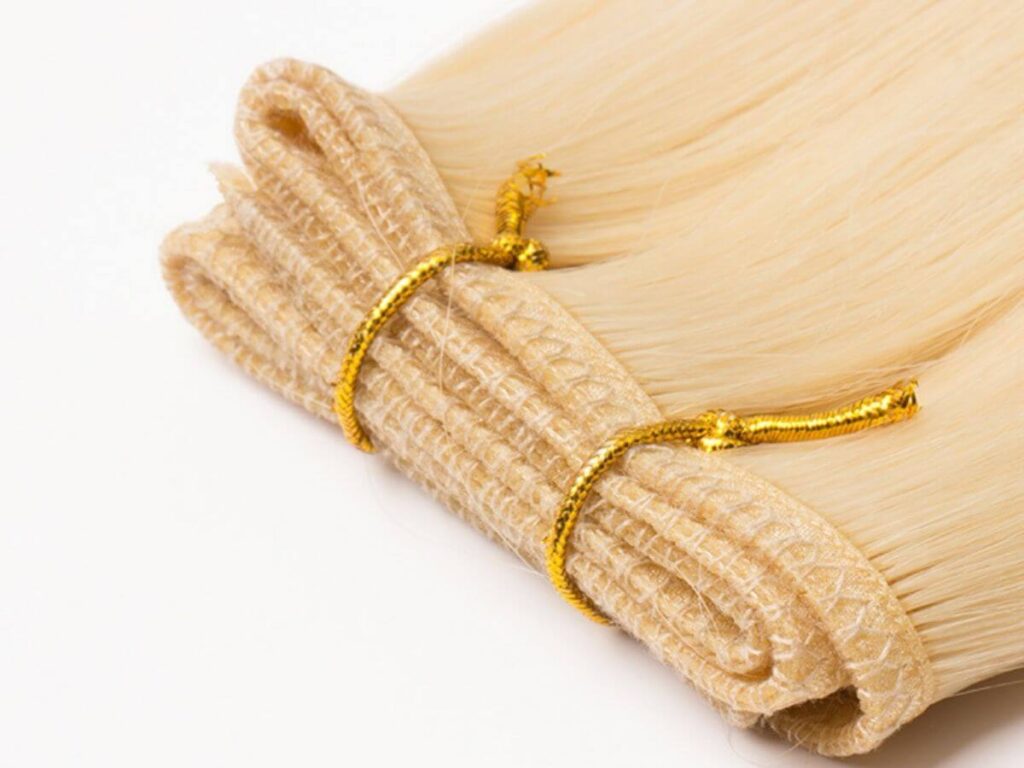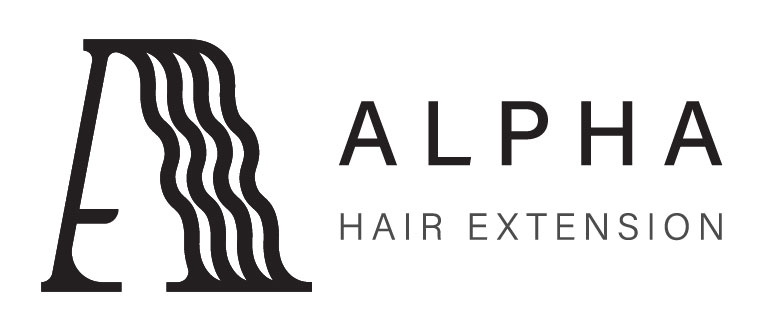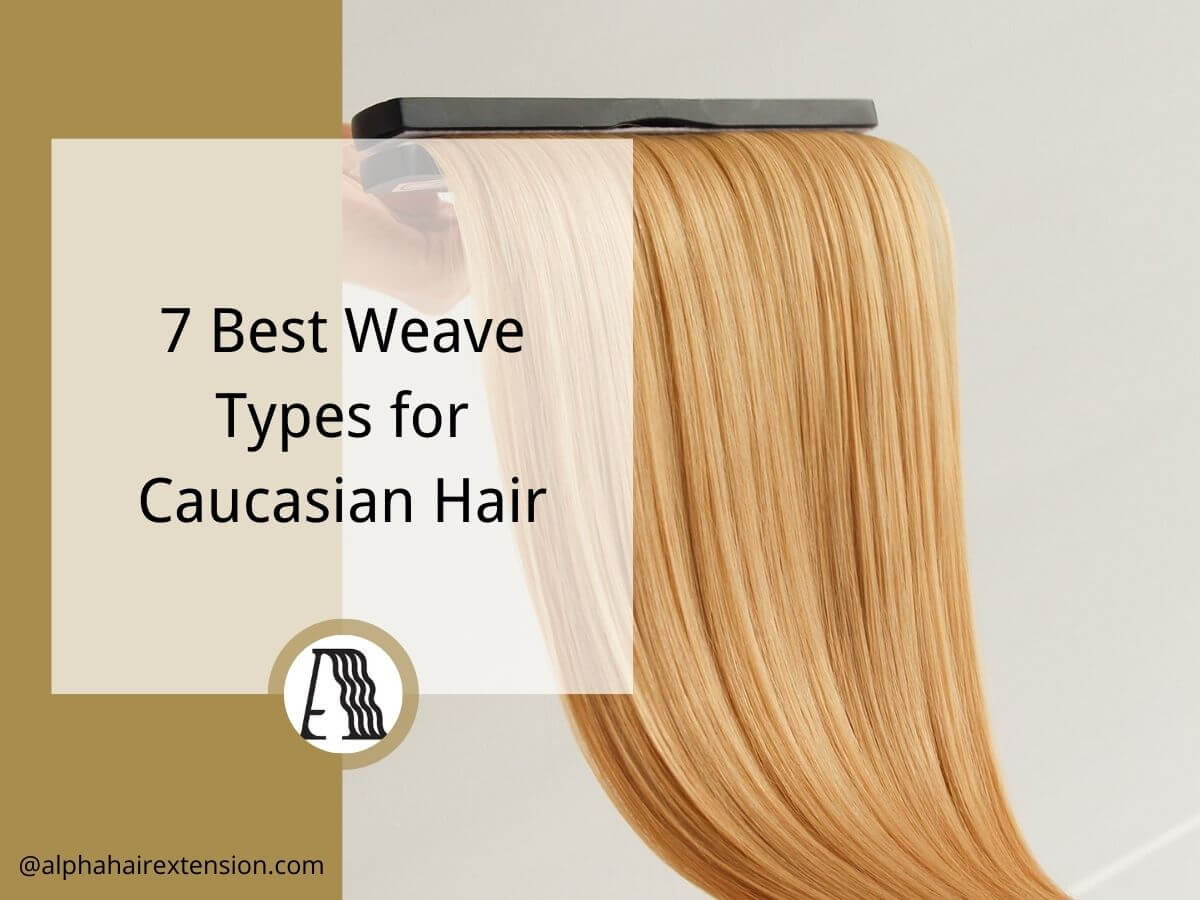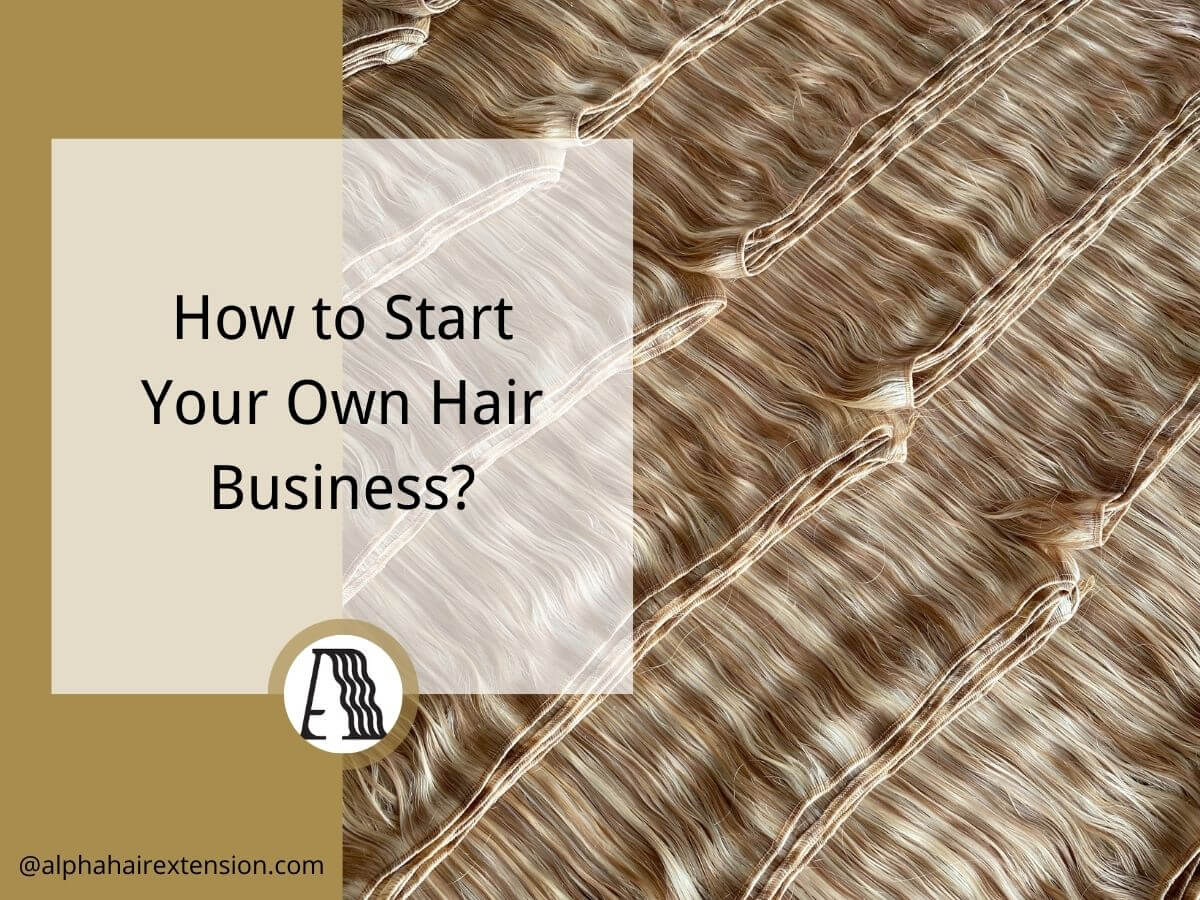Choosing between hand-tied and machine-made wefts isn’t always straightforward. One offers flexibility and a natural look, the other provides structure and durability.
But which one lasts longer? That depends on the needs of your customers and the experience you want to deliver.
After working with professionals, testing both options, and gathering feedback from salons and buyers, I’ve seen how each performs in real business settings.
This guide breaks down durability, comfort, thickness, installation, and cost—helping you make the right choice for your business.
1. What is Hand-Tied?
I remember the first time a stylist showed me hand-tied wefts. She held up a thin, delicate strip of hair and said, “These are hand-sewn, so they lay flatter and feel lighter.” Then she showed me a thicker, machine-made weft and added, “This one is more structured but bulkier.”
At first glance, the hand-tied version looked like the obvious choice—so natural, so seamless. But as I dug deeper, I realized there was more to the decision.
Characteristics
Hand-tied wefts stand out because of their lightweight design and seamless blend. But they also come with limitations.
- Ultra-thin and lightweight – Perfect for clients who want comfort and flexibility.
- Seamless blending – Sits flat against the scalp, making them nearly invisible.
- Non-cuttable wefts – Unlike machine-made options, cutting them can cause unraveling.
Sounds great, right? But here’s where the challenge comes in—not every client or stylist is a perfect match for hand-tied wefts.
Who Should Use Hand-Tied Extensions?
When I first considered offering these, I assumed they worked for everyone. But I quickly learned that success depends on the right fit.
- Fine or thin hair – These wefts are lightweight, preventing tension and breakage.
- Natural-looking results – Clients who want a barely-there extension love them.
- Comfort seekers – Their soft, flexible feel makes them ideal for long-term wear.
But what about those needing volume or a more durable option? That’s where the comparison gets interesting.
How Are Hand-Tied Extensions Installed?
Unlike clip-ins or tape-ins, hand-tied wefts require a skilled stylist. I’ve seen firsthand how the right installation technique can make or break the result.
- Beaded Foundation – A stylist sections the hair and secures small silicone beads in a row.
- Sewing the Weft – The extension is stitched onto the beads with a thread-and-needle technique.
- Blending the Hair – The stylist seamlessly blends the natural hair over the weft for an invisible finish.
Hand-tied wefts deliver a natural, weightless feel that high-end salon clients love. But they also come with limitations—installation time, higher pricing, and restrictions on cutting.

2. What is Machine Weft?
When I first worked with machine wefts, I saw them as a practical, cost-effective solution. But over time, I realized their real value goes beyond price—they offer durability, flexibility, and scalability for businesses looking to provide high-quality extensions at a lower cost.
Unlike hand-tied wefts, machine wefts are created using a sewing machine, producing a thicker and stronger weft. Since they’re mass-produced, they’re more affordable and easier to customize, making them a reliable choice for brands, salons, and e-commerce businesses that need consistency in supply and performance.
Characteristics
If you’re considering machine wefts for your product line or salon services, here’s what makes them stand out:
- Thicker and bulkier – Add noticeable volume but can feel heavier on fine hair.
- Customizable – Unlike hand-tied options, you can cut them anywhere without unraveling.
- Durable – Strong stitching extends their lifespan, making them a long-term investment.
- Cost-effective – The production process makes them more affordable without sacrificing quality.
These traits make machine wefts a great option for businesses looking to offer durability and affordability. However, for clients who prioritize lightweight comfort and seamless blending, hand-tied wefts might be a better fit.
Who Should Use Machine Wefts?
Choosing the right weft type isn’t just about quality—it’s about what fits your customers’ needs. Machine wefts might be the right option if you’re targeting:
- Clients with medium to thick hair – These wefts work best on hair that can support extra weight.
- Customers who want long-term wear – Strong stitching makes them last longer, reducing the need for frequent replacements.
- Shoppers looking for a budget-friendly option – Lower production costs make machine wefts a profitable, scalable choice for businesses.
If your focus is on high-volume sales, salon services, or providing cost-effective solutions without compromising durability, machine wefts are worth considering.
How Are Machine Wefts Installed?
Machine wefts give you more flexibility in application, which means you can tailor them to different customer preferences. Here are the most common installation methods:
- Sewn-in – The weft is stitched onto a braided base, ensuring a secure, long-lasting hold.
- Glued – A bonding adhesive attaches the weft directly to the hair, making installation faster.
- Clip-ins – Clips are sewn into the weft, allowing for an easy, temporary solution.
Machine wefts offer strength, customization, and affordability, making them a practical choice for many businesses.

3. Key Differences Between Hand-Tied and Machine Wefts
Hand-tied and machine wefts may look similar, but they have major differences. These differences affect how they feel, how they’re installed, and how long they last. Understanding these key points will help you choose the right type for your customers. Below is a comparison of their main differences:
| Feature | Hand-Tied Wefts | Machine Wefts |
| Thickness & Weight | Ultra-thin and lightweight | Thicker and bulkier |
| Ideal for fine or thin hair | Best for medium to thick hair | |
| Blends seamlessly with natural hair | Adds more volume and fullness | |
| Comfort & Flexibility | More flexible and lays flat on the scalp | Stiffer and may feel heavier |
| Less noticeable, making it comfortable to wear | Bulkier, which can add extra weight | |
| Durability & Longevity | More delicate, requires gentle care | Stronger, can handle more frequent styling |
| Can last 6–9 months with proper maintenance | Can last up to 12 months with proper care | |
| Installation & Maintenance | Must be installed by a professional stylist | Can be installed professionally or by DIY users |
| Sewn onto beaded rows for a seamless blend | Can be sewn in, glued, or used as clip-ins | |
| Requires careful brushing and washing to prevent shedding | Can withstand frequent washing and heat styling | |
| Cost | More expensive due to the hand-sewn process | More budget-friendly due to mass production |
| Considered a luxury option for a natural, lightweight feel | Affordable, making it widely accessible |
4. Factors to Consider When Choosing a Hand-Tied or Machine Weft
When deciding between hand-tied and machine wefts, several factors play a role in determining the best option for your needs. Here are the key considerations:
Fine or Thin Hair
For clients with fine or thin hair, hand-tied wefts offer the best results. Their lightweight structure prevents unnecessary tension on delicate strands, reducing the risk of breakage. Since they lay flat against the scalp, they create a natural, seamless appearance, making them a popular choice for high-end salons and premium hair extension brands.
Machine wefts, while durable, add bulk and weight, which may not be suitable for clients with finer hair. If your business caters to individuals seeking a lightweight, invisible look, hand-tied wefts are the preferred option.
Thick or Coarse Hair
For customers with thicker or coarser hair, machine wefts provide better coverage and longevity. Their denser structure allows for increased volume while maintaining durability through repeated styling and washing. Since they can handle more tension, they are ideal for clients seeking longer wear and more body.
Wholesale distributors and retailers stocking affordable, high-volume products will find that machine wefts appeal to clients looking for durability and flexibility at a competitive price.
Longevity and Cost Efficiency
Cost plays a major role in bulk purchasing decisions. Machine wefts offer higher durability and can be cut anywhere along the weft, making them a cost-effective solution for salons, e-commerce brands, and distributors. With proper care, they last up to 12 months, making them a high-value option for customers looking for long-term use.
However, hand-tied wefts appeal to a luxury market. Their hand-sewn process and natural appearance justify a higher price point, making them an excellent choice for premium brands that cater to high-end salons and VIP clientele. Businesses targeting this segment should focus on the exclusivity and craftsmanship of hand-tied wefts.
Professional vs. DIY Use
The installation process is another key factor for salon owners and hair professionals. Hand-tied wefts require trained stylists who specialize in beaded row or sewn-in techniques. This means brands marketing hand-tied wefts should focus on salon partnerships and professional-use distribution.
Machine wefts offer greater flexibility, appealing to both professional stylists and DIY users. Since they can be sewn in, glued, or clipped in, they are easier to install, making them a strong choice for beauty retailers, e-commerce stores, and businesses catering to at-home extension users.
Conclusion
Back when I was choosing between hand-tied and machine wefts, I didn’t realize how much the decision depended on what I needed. Now, after testing both, I see the value in each.
Hand-tied wefts? Lightweight, seamless, and perfect for fine hair.
Machine wefts? Strong, durable, and a smart choice for volume and affordability.
So, which is right for you? That depends on your business and your customers.
The best way to find out? Start testing. Offer both. See what works.
We’re here to help you find the right fit for your business. Contact us today to learn more!
Explore More of Our Resources
There’s so much more to discover! Check out our other products and find what fits your needs:
Still haven’t found what you’re looking for? Don’t hesitate to contact us. We’re available around the clock to assist you.







